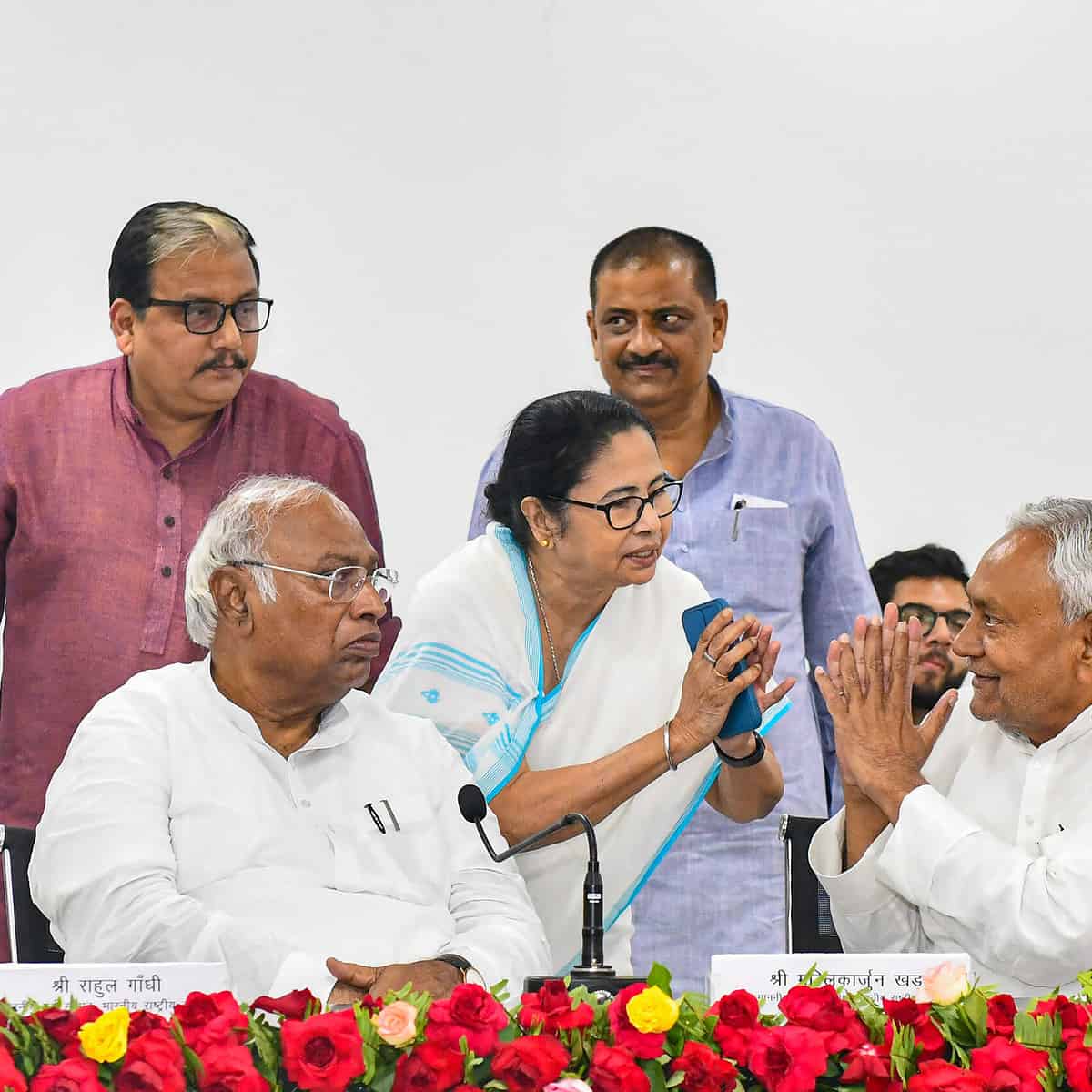
As the 2024 Lok Sabha election inches closer, the ruling NDA and Opposition UPA coalitions prepare for the fierce battle ahead. The UPA is holding strategy meetings in Bangalore on July 18 while the NDA is meeting in Delhi on the same day to showcase its strength.
UPA has expanded, with eight more parties joining the second unity meeting next week in Bengaluru. The Opposition is enthused after its successful first meeting in Patna last month in which 16 parties participated. The Bangalore meeting is meant to take it forward.
The NDA, too, is seeking more allies and retaining the present flock.
Congress president Mallikarjun Kharge had invited 24 allies, including eight new entrants. The Viduthalai Chiruthaigal Katchi, the Revolutionary Socialist Party, the Forward Bloc, the Indian Union Muslim League, the Kerala Congress-Joseph and the Kerala Congress-Mani are likely to join the second Opposition meeting. MDMK and KDMK were BJP allies earlier.
The Congress Parliamentary Party’s leader Sonia Gandhi will attend the meeting. Though she has taken a back seat, for the first time, she will participate in Bengaluru meeting.
UPA promoting partnerships
The main objective of the UPA is to promote positive partnerships. At Patna, the UPA held firm to an unwavering mindset of ‘hum saath saath hai’. This motto encapsulates the UPA’s unwavering confidence in working as a team. The Patna meeting has kept out irritants among the players, which itself is considered well-begun.
A lot had happened politically since the Opposition’s first and second meetings. There was a setback after the Nationalist Congress Party split this month. Eight NCP rebels, including Sharad Pawar’s close lieutenants Praful Patel and Chagan Bhujjwel, have ditched the senior Pawar. Sharad Pawar’s nephew Ajit Pawar is now the new Deputy chief minister of the Shinde cabinet.
Secondly, in West Bengal, Trinamool Congress led by Mamata Banerjee won a massive victory in the recent Panchayat elections.
Why do the national parties seek alliance? The BJP governs ten states independently and five others in partnership with others, while the Congress governs four states independently, and three others with allies.
In about 180 Lok Sabha seats, the primary challengers to the national parties are regional parties. The Congress versus BJP would play out in over 230 seats. Bharat Rashtra Samiti, Biju Janata Dal, Andhra Pradesh’s YSRCP, Bahujan Samaj Party, and other smaller parties with pockets of influence are neutral.
The Opposition is already broadly united in States like Maharashtra, Bihar, Tamil Nadu, Jharkhand, and Jammu and Kashmir. The contradictions are in West Bengal as the TMC directly competes with the BJP. The AAP is a rival to the BJP in Delhi and Punjab. Congress. In Kerala,
it is Congress versus the Left.
The main issue is whether Congress accepts allies as its equal and vice versa. Congress and the allies perceive each other as not having equal status. They must come to a mutual understanding. For instance, following the Patna meeting, AAP announced that attending future meetings would depend on whether Congress publicly denounced the recent ordinance hurting the Delhi government.
The second priority is establishing a Common Minimum Programme.
The third is to agree on a convenor; the choice of the prime ministerial candidate will come later.
The fourth is an apprehension that Modi might advance Lok Sabha polls. Hence Opposition parties must find the broadest possible consensus on various issues.
BJP lost 4 allies since 2014
In the 2024 elections, the BJP is eying for a hat-trick for Modi. A new and expanded NDA will meet on July 18 in Delhi to discuss their plans. The BJP aims to secure 50% of the vote share by collaborating with new and old NDA members.
The BJP has shrunk because it lost four of its oldest allies since 2014 — The Janata Dal (United), Akali Dal, Shiv Sena, and JD(U). In a game of snakes and ladders, Telugu Desam and Akali Dal want to come back. Shiv Sena has split, and one faction will join the NDA.
The new members are Ajit Pawar-led faction of the Nationalist Congress Party and the Shinde faction of the Shiv Sena, Chirag Paswan, leader of the Lok Jan Shakti Party (RV), and Hindustani Awam Morcha (HAM) leader Jiten Ram Manjhi. The JD(S) from Karnataka could also join the NDA meeting. There could be a delay in finalising the return of the TDP and the SAD.
The BJP needs to be more attentive to its allies, as they feel they need to be consulted. It must nurse its allies in Maharashtra, Haryana, Bihar, the northeastern and southern states. It must also keep channels open with neutral parties like Biju Janata Dal and YSRCP.
The purpose of the July 18 meeting is to signal NDA is strong. The BJP also wants to reduce the media spotlight on UPA’s Bangalore meeting. Both coalitions plan to make full use of optics.
Despite what happens in the two meetings, it is vital for the Opposition to maintain their unity and for the NDA to add more allies and prioritize their importance. Both coalitions must stay committed to these goals.



